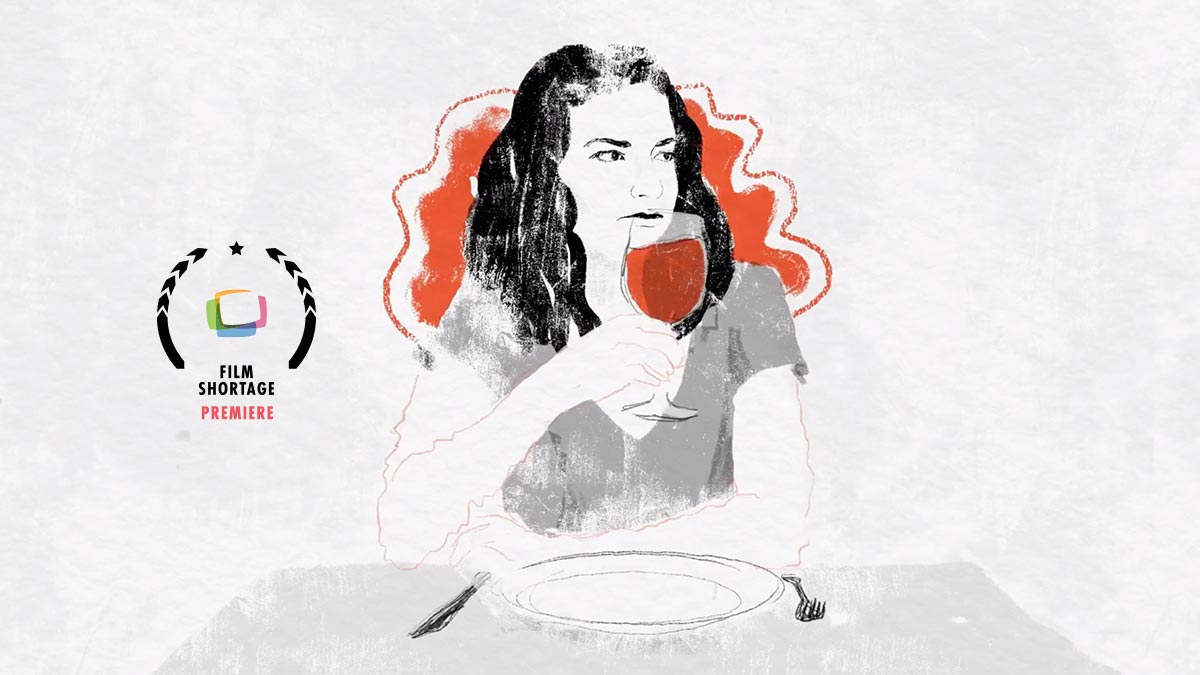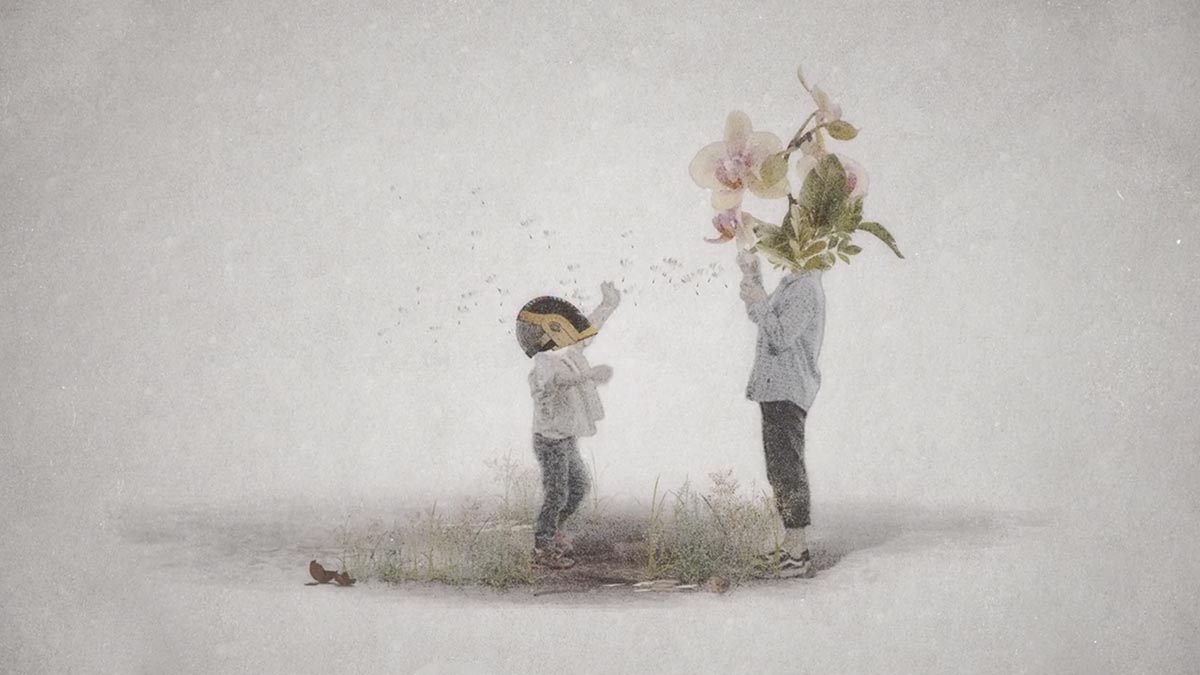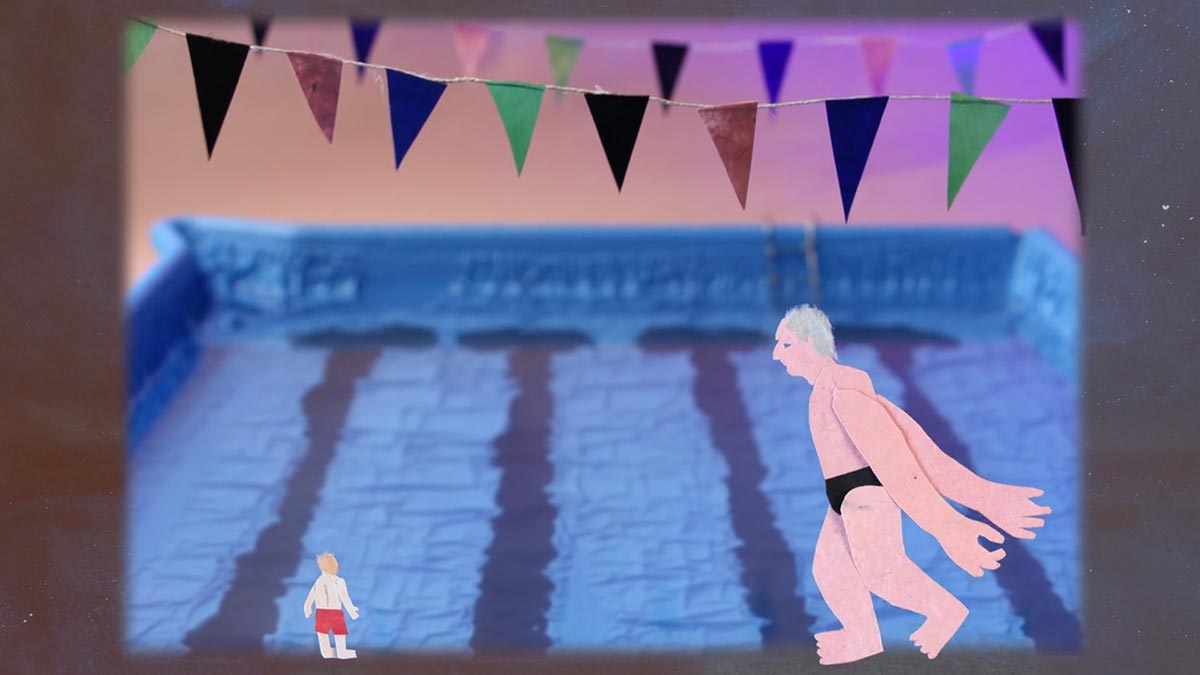This may be a reverie of our increasingly virtualized world that is submerged into a directional flow of information and disparate impressions that takes shape as a slow-burning anxiety; a rupture in linear time.
Conceptually using Generative Adversarial Networks (GANs) and composed of a single take, «Incomplete» invites us to traverse an endless choreography of bodies in perpetual free-fall and updating images that reflect a world in constant change.
This work is an ode to what artist and media theorist Hito Steyerl coins the poor image. The image which is collected, copied, and processed to the point of disorientation and anonymity. The image which is not one but consists of many while presenting a different perception of coherency.
The year is 2021. The future has already happened.

Can you tell us what inspired you to bring ‘Incomplete’ to life?
I connected with Ash Koosha‘s song “Incomplete” immediately when I first listened to it in 2018. It encompasses a restlessness that creeps into daily living. There has never existed as much access to information, people, things, and places as much as today, and yet we are plagued with temporary or missed connections, and an unease of a shared future that teeters between déjà vu, anticipation, and abandonment. I was inspired by this inflection.
What everybody wants to know, how was this done?
This work utilizes Blender, an open-source 3D graphical software as the basis of the animation. Each frame from the scene is rendered as silhouettes of different shades of gray, each representing a category of objects in the real world, and are then translated to their photographic representations while maintaining the same shape in the final image using a machine learning technique known as Generative Adversarial Networks (GANs). It is used to semantically synthesize photographic images from a series of label maps: a process that is referred to as image-to-image translation. The algorithm produces images that are as photographic as they are inexact, and, behaving generatively, results in an amalgam between the algorithm and the crafted 3D scenes.

What was your process of working with the Ash Koosha’s track?
Koosha is the kind of collaborator that supports conditions for multiple creative visions to take shape, so he shared brief thoughts on the song and left a lot of room for me to explore the project on my own terms. We both were interested in capturing a sense of altered time—time accelerated, stretched, staggered, lost, etc, and thinking through notions of the self. I was additionally interested in distorting the moving image in a way that activated a more subjective experience for the viewer to engage with the work. I wanted to create a world in which the main character was not a fixed person, animal, or object, but the dynamic, millions of images we are commanded by, on both a crude and subtle level, every day. At the time of working on “Incomplete” I was also working on several experiments on the side utilizing techniques in node-based compositing and the machine learning integration worked well in translating these experiments into computational methods that express the consistent dominance of images —conceptually and visually.
What do you hope people will take away from Incomplete?
Inspiration for new ways to talk and engage creatively, critically, and playfully about our dizzying world.




